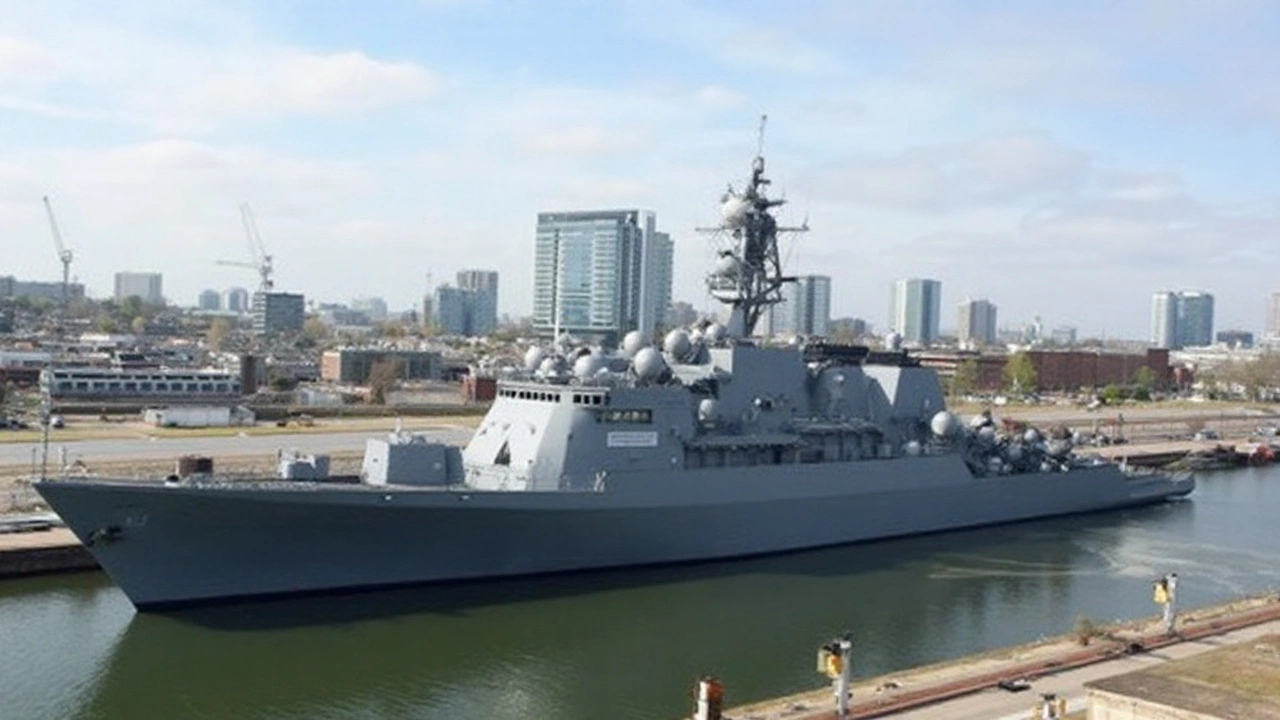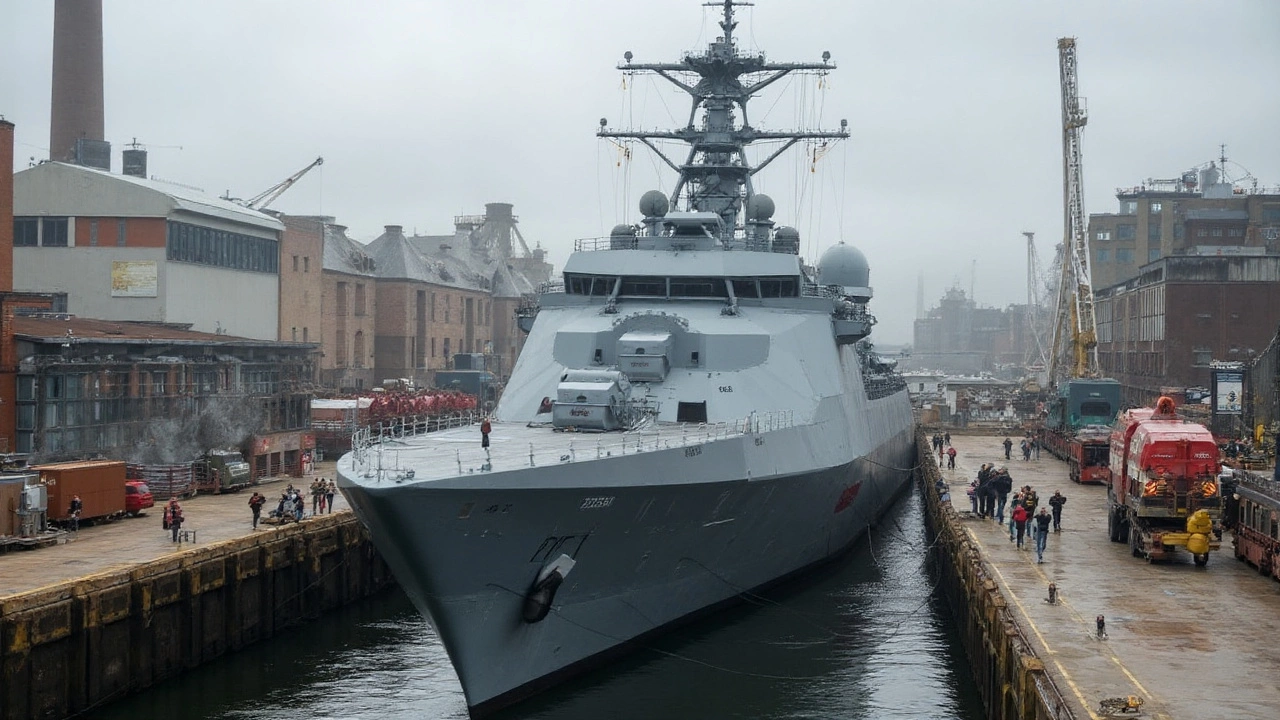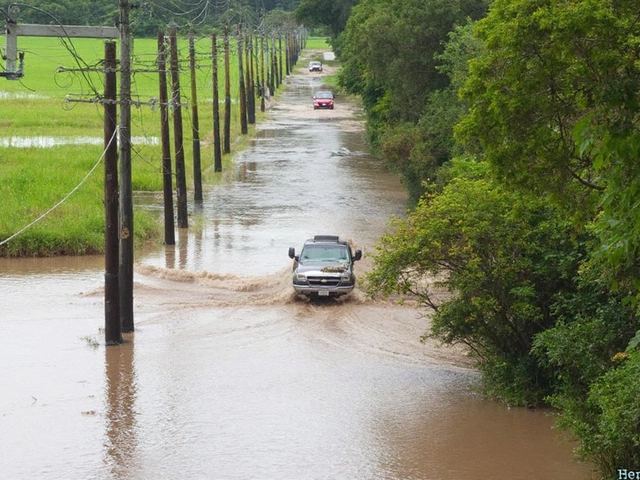
Norway picks UK’s Type 26 in £10bn frigate deal after year-long contest
Norway has chosen the British-designed Type 26 frigate as its next-generation warship, signing off on a deal valued at around £10 billion ($13.5 billion) for at least five ships and locking in a long-term partnership with the United Kingdom. The decision, announced on August 31, 2025, ends a high-stakes competition that began in November 2024 and drew bids from France, Germany, the United States, and the UK.
Prime Minister Jonas Gahr Støre called the choice historic. “Norway and the United Kingdom are close allies, with common interests and strong bilateral ties. I am confident that the strategic partnership with the UK for purchasing, developing and operating frigates is the right decision,” he said at the announcement. The government has consulted the Storting through the expanded Committee on Foreign Affairs and Defence, and the Chief of Defence backed the UK selection.
For London, the deal is the biggest British warship export by value and a headline win for the UK’s naval industry. BAE Systems will build the ships in Glasgow, with deliveries to Norway scheduled to start in 2030. The UK Ministry of Defence says the order will support about 4,000 jobs across the supply chain well into the 2030s.
The Type 26 will replace Norway’s Fridtjof Nansen-class, a fleet introduced in the mid-2000s and now down to four ships after the loss of HNoMS Helge Ingstad in 2018. The move resets Norway’s surface fleet for the next three decades—and squarely targets the threat posed by advanced submarines operating in the Norwegian and Barents Seas.
The field was strong. France offered its FDI frigate, Germany pitched the F126, and the US proposed the Constellation-class. Støre acknowledged the competition was tight: “The four candidates, France, Germany, USA and the UK, have provided strong and competitive proposals. They are all close allies, and I wish to express my appreciation for a constructive process and dialogue.”
So why the Type 26? Norwegian officials point to three things: its focus on anti-submarine warfare (ASW), the operational fit with the North Atlantic mission, and a partnership model that includes industrial work for Norwegian firms. The design was built around stealth at sea—quiet propulsion, low radiated noise, and space for a powerful towed-array sonar—traits that matter when Russian nuclear and diesel-electric submarines are moving through the Greenland–Iceland–UK (GIUK) gap and the Norwegian Sea.
British Defence Secretary John Healey spelled out the strategic angle: the deal will “put more warships in the North Atlantic to hunt Russian submarines, protect critical infrastructure, and keep both nations secure.” Norway’s offshore gas pipelines, seabed cables, and energy platforms have become core national assets—and potential targets. A modern ASW frigate is a direct investment in keeping them safe.
The Type 26 is not a paper ship. The Royal Navy’s City-class—its name for the Type 26—includes eight vessels, with multiple hulls already under construction in Glasgow. The design has drawn overseas customers before. Australia and Canada both selected variants based on Type 26 for their own surface combatant programs. That existing user community gives Norway more confidence on supportability, upgrades, and long-term training pipelines.
Technically, the Type 26 was conceived to be quiet and adaptable. It’s built around a combined gas turbine and electric drive that keeps noise down at ASW speeds. It carries a large towed-array sonar paired with a hull-mounted sonar, and it can operate a full-size ASW helicopter like the NH90 or MH-60R—assets the Norwegians already know well. A mission bay offers room for unmanned systems, boats, and disaster-relief gear. For weapons, the British baseline integrates Sea Ceptor air defense missiles and a 5-inch main gun, with strike-length vertical launch cells to host a mix of missiles depending on the operator’s needs. Norway’s final combat system fit has not been disclosed, but integration of domestic systems and weapons is expected to be on the table.
Cost and schedule weighed heavily in the decision. Norway wants ships arriving from 2030, and it needs a build plan that doesn’t collide with the Royal Navy’s own production. BAE has a steady drumbeat of work at its Clyde yards and a supply chain already producing major blocks, propulsion units, and combat system modules for the UK’s ships—capacity that lends credibility to the Norwegian schedule.
Oslo also looked at through-life costs—crewing, fuel, maintenance, and mid-life upgrades. Type 26 was designed with modularity in mind, which should make future sensor and weapon refreshes less painful. Norway’s cold-water operating environment demands reliable heating, de-icing, and survivability features, and officials say the British design met those requirements with margin.
The program will be Norway’s largest-ever defense investment. That scale brings scrutiny. The Storting has demanded regular oversight and cost transparency, especially after hard lessons from earlier big-ticket projects. Officials say risk has been reduced by buying a ship that is already in serial production, but they’re under no illusion: this is a complex, multi-decade effort that spans design tweaks, software integration, crew training, and infrastructure upgrades at bases like Haakonsvern.
Industrial cooperation is a major plank of the deal. “We have identified a wide range of industrial and technological areas of cooperation where Norwegian industry can compete for contracts,” Støre said. Expect opportunities around combat systems integration, sonars, communications, electronic warfare, and unmanned systems. Norwegian companies with experience on the Nansen-class and coastal defense—think missiles, software, and autonomy—are well placed to contribute. With the UK keen to sustain a high-output shipbuilding drumbeat, both sides have incentive to spread work where it helps delivery and cuts risk.
What might a Norwegian Type 26 look like in practice? The hull and propulsion will follow the UK baseline. The combat system is the bigger variable. Norway’s current frigates use an Aegis-based suite with US-standard vertical launchers. For the new ships, the government has kept options open, focusing on performance and interoperability rather than labels. Air-defense choices could range from European missiles like CAMM to US-standard options; anti-ship firepower could include systems already in Norwegian service. The mission bay makes it simpler to adopt unmanned surface and underwater vehicles as they mature, which is attractive for mine countermeasures and ASW.
For the crew, the changes are just as significant. The Type 26 is designed with a smaller core complement than older ships thanks to more automation, which can ease manning pressures. Accommodation is modern, and the ship’s power margins and open architecture make it easier to plug in new sensors and weapons during refits without ripping the ship apart.
The timeline is aggressive but achievable if the current plan holds. Key steps include finalizing the Norwegian configuration, placing long-lead orders for propulsion, sensors, and steel, and sequencing the Glasgow build slots alongside Royal Navy hulls. Early work on training and logistics—spare parts pipelines, shore-based simulators, and maintenance tooling—will start well before the first hull arrives.
Regionally, the purchase changes NATO’s naval math. Once delivered, the UK and Norway together will field 13 high-end ASW frigates in northern European waters, a number that gives the alliance more options to cover the GIUK gap, the Norwegian Sea, and approaches to the Arctic. That’s not just about tailing submarines. It’s also about patrolling pipelines, undersea cables, and wind farms—pieces of national infrastructure that have become strategic targets and diplomatic flashpoints.
The choice also deepens the UK–Norway defense relationship, which already includes intelligence sharing, maritime patrol aircraft coordination, and joint exercises. With compatible ships, the two navies can standardize on tactics, share training, and even swap spare parts in a pinch. For NATO planners, common hulls simplify logistics and make task-group operations cleaner.
The geopolitical context is hard to ignore. Russia’s Northern Fleet remains active, and its submarines are more capable and quieter than past generations. Exercise tempo across the High North is up. Meanwhile, climate change is opening parts of the Arctic for longer periods, extending the season for military and commercial traffic. Norway needs hulls on station that can detect, track, and if necessary deter submarines over long distances and in rough weather. The Type 26 was built for that work.
There are risks. Global supply chains are still volatile, from specialized steel to electronics. Skilled labor is in demand across European shipyards. Exchange-rate fluctuations can hit budgets, and any changes to the combat system configuration could add time and cost. Oslo’s answer is to lock in long-lead items early, keep changes minimal, and use a design with known performance.
On the UK side, this export cements Glasgow’s role as a hub for complex warship building and gives British suppliers volume that smooths production. From advanced radars to propulsion gear, that steadier demand helps companies invest in tooling and apprentices and reduces unit costs. It also gives the Royal Navy indirect benefits: improvements or fixes developed for Norway can flow back into British ships during upgrades.
For all the strategy talk, the day-to-day mission still drives design. ASW is patient, technical work. The ship has to be quiet and stable. The sonar fit must be sensitive and well integrated with the helicopter. Data fusion in the operations room has to be fast and reliable. And the crew needs enough endurance—food, fuel, comfort—to stay on task for weeks. Norway’s operating picture, from fjords to deep ocean, puts a premium on all of that.
What happens next? Expect a government-to-government framework to be fleshed out into contracts that define the exact configuration, delivery schedule, and industrial packages. Norway will begin site work to prepare for the new class—training facilities, docks, and support equipment—so the first ship can transition smoothly into service. Trials in UK waters will be followed by acceptance and work-up in Norway, with the first hull arriving in the early 2030s if the schedule holds.
If all goes to plan, the Royal Norwegian Navy will enter the mid-2030s with a fresh ASW core, the UK will have secured a flagship export and long-term industrial workload, and NATO will have more coverage across the North Atlantic at a time when it’s needed. The choice of ship is only part of that story. The value lies in how two close allies plan, train, and operate together for decades to come.

What the deal means for NATO, industry, and the North Atlantic
The NATO angle is simple: more silent hunters in the water. With a combined fleet of 13 ASW-optimized frigates once Norway’s ships arrive, the alliance can maintain continuous presence in key choke points and shorten response times when a submarine pops up on sensors. That presence supports the security of vital sea lanes that carry energy and trade between North America and Europe.
For industry, this is a confidence signal. The Type 26 supply chain stretches across the UK—from the Clyde to the South West—and includes dozens of specialist firms. The Norwegian order gives them predictable work through the 2030s. For Norwegian companies, the partnership opens doors on subsystems, software, and future upgrades, with long-term roles more valuable than one-off contracts.
For Norway’s sailors, it means new tools and a new way of working. Automation should reduce strain, while the mission bay and open architecture make it easier to adopt unmanned systems as they mature. The ships will arrive into a Navy that has already absorbed lessons from the Nansen-class era: damage control, coastal navigation, and the importance of crew training in complex littorals. Those lessons will shape how the Type 26 is brought into service.
And for the wider region, the message is clear: Norway is investing heavily in the maritime domain at a time when the North Atlantic and Arctic are back at the center of European security planning. A quiet, capable frigate is not a headline-grabber like a carrier or a fighter jet. But in the cold, deep waters off Norway, it may be the most important ship in the fleet.




